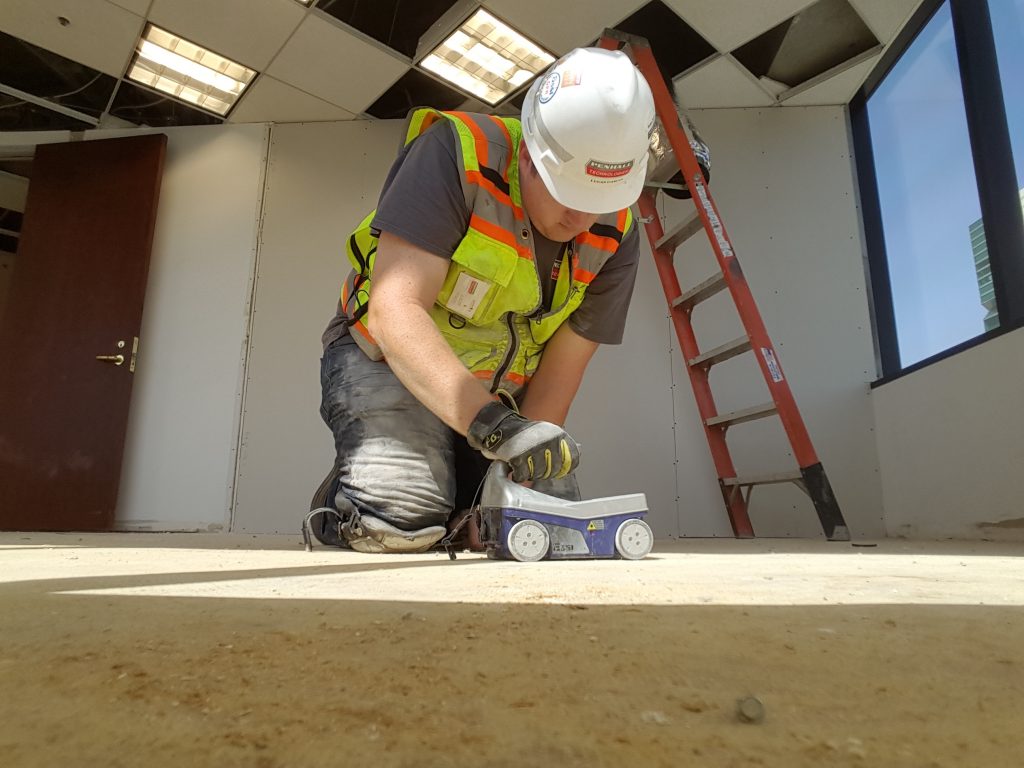Reveal the Transformative Power of Concrete Scanning in Making The Most Of Efficiency and Safety
Concrete scanning has arised as a crucial device in the building and construction market, using unmatched advantages in improving task effectiveness and making sure safety requirements. The transformative power of concrete scanning lies in its capacity to supply real-time data and detailed insights, revolutionizing how projects are planned and carried out.
Value of Concrete Scanning
Guaranteeing the architectural stability and safety and security of building and construction tasks begins with the crucial action of conducting extensive concrete scanning. Concrete scanning is a non-destructive method utilized to spot and map subsurface components within concrete structures.
The value of concrete scanning can not be overstated, as it plays an essential function in preventing mishaps, lessening project hold-ups, and making certain the long-lasting longevity of the construction. By recognizing potential dangers prior to the construction phase begins, builders can carry out ideal safety steps and make informed choices pertaining to the design and execution of the job. In addition, concrete scanning helps in optimizing job timelines and budget plan by staying clear of unexpected expenses and hold-ups that might emerge due to unexpected blockages within the concrete. Inevitably, buying thorough concrete scanning is a proactive approach that boosts both efficiency and safety in construction jobs.
How Concrete Scanning Works
Concrete scanning operates as an important device in building projects by using sophisticated technologies to identify and map subsurface aspects without causing architectural damages. Ground Permeating Radar (GPR) and Electromagnetic Induction (EMI) are 2 primary methods utilized in concrete scanning.
During the scanning procedure, the information gathered is analyzed in real-time, enabling immediate identification of possible risks or barriers underneath the surface area. This information help in decision-making, guaranteeing that building activities proceed securely and efficiently. Furthermore, 3D imaging software program can be utilized to develop comprehensive maps of the subsurface aspects, further improving project preparation and execution. By employing these sophisticated modern technologies, concrete scanning substantially minimizes the risk of expensive problems and injuries on building and construction websites.
Advantages of Concrete Scanning
Making use of advanced scanning modern technologies in construction projects uses a multitude of benefits, enhancing both efficiency and safety and security on-site. One of the primary advantages of concrete scanning is the capacity to detect and locate embedded items such as rebar, post-tension cords, and avenues accurately. By determining these elements before drilling or reducing right into concrete frameworks, the threat of unexpected strikes is considerably reduced, protecting against potential injuries to employees and damage to the framework itself. In addition, concrete scanning aids in planning and developing better, as it offers precise information about the area and deepness of structural parts.

Study: Concrete Scanning Success

In an additional situation, a construction linked here firm used 3D concrete scanning to analyze the condition old concrete structures in a historical building. The comprehensive scans given beneficial insights right into check the degree of damage and aided prioritize upkeep efforts successfully. By proactively attending to areas of problem recognized with scanning, the company was able to extend the lifespan of the framework and make sure resident safety.
These study underscore the transformative power of concrete scanning in boosting effectiveness, accuracy, and safety and security in building jobs.
Executing Concrete Scanning in Projects
Implementing sophisticated scanning technologies during construction jobs has actually ended up being increasingly essential for enhancing accuracy and safety. By integrating concrete scanning right into task preparation and implementation, building teams can determine prospective risks, such as rebar or post-tension cable televisions, hidden within concrete structures. This proactive technique lessens the threat of crashes, hold-ups, and learn the facts here now costly rework, ultimately bring about much more effective task timelines and spending plans.
To implement concrete scanning effectively, task supervisors must work together closely with seasoned scanning specialists to establish one of the most appropriate scanning techniques for the certain job requirements. Involving scanning professionals from the early phases of a job enables the group to develop extensive scanning strategies that resolve crucial areas of concern and ensure complete data collection.
Furthermore, incorporating concrete scanning into regular project workflows can simplify decision-making procedures, as real-time scan data supplies prompt insights into the problem of concrete frameworks - Concrete Scanning. This data-driven approach facilitates informed analytical and allows groups to make changes without delay, promoting a society of effectiveness and security throughout the job lifecycle

Final Thought
In conclusion, concrete scanning plays an important role in boosting performance and security in construction projects. By making use of innovative technology to detect and map out underlying frameworks within concrete, this process assists to avoid costly errors, make certain architectural integrity, and minimize dangers on website. With the capacity to discover covert components and offer exact information, concrete scanning verifies to be an important device for optimizing task results and maximizing general success.
Concrete scanning is a non-destructive method used to spot and map subsurface elements within concrete structures. In addition, concrete scanning helps in maximizing project timelines and budget by avoiding unanticipated prices and hold-ups that might develop due to unforeseen blockages within the concrete. One noteworthy situation study includes a massive restoration job where concrete scanning played a crucial duty in making sure job success.In one more case, a construction firm used 3D concrete scanning to examine the condition of aging concrete frameworks in a historical structure. By integrating concrete scanning into job planning and execution, building teams can determine prospective dangers, such as rebar or post-tension cords, concealed within concrete frameworks.